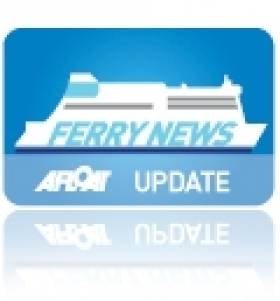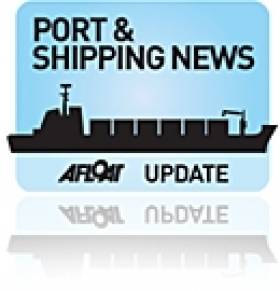Displaying items by tag: Loch Ryan
Loch Ryan: Campaign to Upgrade Major Roads taken to Scottish Parliament
In south-west Scotland, campaigners from Dumfries and Galloway have gone to the Scottish Parliament, to push the case for improvements of two of the region’s trunk roads, the A75 and A77 out of Loch Ryan.
The campaigners at Holyrood were joined by politicians and Stena Line, operator's of Belfast-Cairnryan from where in Scotland the A75 heads east to Dumfries and the A77 which leads into the M77 connecting Glasgow.
In Edinburgh the campaigners had met with the Scottish Labour leader, Anas Sarwar and Scotland’s Transport Minister Jenny Gilruth, despite her previously having said she was unavailable.
Willie Scobie, a Stranraer councillor and campaign team member said: “We put our case to Ms Gilruth for both trunk roads to be improved to dual carriageway standards, not least because of the lack of investment over decades but, more importantly, because it was crucial for both the Scottish and Northern Ireland economies."
The Daily Record has more on the campaign and as Afloat reported last year, Stena along with P&O Ferries (to Larne), had sought the support of the local council in a bid to create Scotland's first "green port" at Cairnryan, which could unlock a £25m investment.
In 2011 Stena Line opened the purpose-built Loch Ryan Port (Cairnryan) terminal having ceased the historic link with Stranraer which is located further down the loch and away from the open sea.
The relocation of port also saw the introduction of 'Superfast' twins on the shorter North Channel route to Belfast where the VT2 terminal was upgraded last month.
New Belfast-Cairnryan Route Celebrates First Sailings
#FERRY NEWS - Demotix reports that the first ferries have sailed to Northern Ireland from the new £200m Stena Line port facility at Cairnryan in western Scotland.
The company's final sailings from Stranraer took place at the weekend before the official relocation to the new port, which lies closer to the mouth of Loch Ryan and the North Channel.
As previously reported on Afloat.ie, the Stena Superfast VII is serving the new route following the mothballing of the Stena Voyager service.
The ferry and her sister ship Stena Superfast VIII are on charter from Scandinavian ferry operator Tallink, and are the largest ferries ever to service the North Channel route.
Images of the new Belfast-Cairnryan Stena Line crossing are available HERE.
Award Winning Stena Line Look Forward to New Northern Route
"We are moving into a very important time for Stena Line's operation between Northern Ireland and Scotland. On November 21 we are scheduled to start our new Belfast to Cairnryan service which will also see the introduction of two new vessels, Stena Superfast VII and Superfast VIII, the largest ships every to have sailed between Northern Ireland and Scotland," he continued.
Stena Line's switch of Scottish terminal from Stranrear to the new purpose built facility in Cairnryan which is some 8-miles closer to the open sea along Loch Ryan will reduce sailing times by 35 minutes down to 2 hours 15 minutes.
The 30,285grt Stena Superfast VII and Superfast VIII sisters can carry 1,200 passengers, 660 cars and 110 freight-unit / trucks. In addition they have a novel Nordic Spa facility incorporating a sauna and Jacuzzi.
The 206m pair will compete with rivals P&O (Irish Sea) which operates also from a neighbouring terminal in Cairnryan where another pair of sisters European Highlander and European Causeway provide 2-hour sailings to Larne.
Currently Belfast-Stranraer sailings are served by conventional tonnage ferries Stena Caledonia and Stena Navigator which lost engine-power on 14 October, to read more click HERE.
In addition fast-sailings are run by the expensive to operate HSS Stena Voyager which manages a faster crossing time on the existing route by shaving 15 minutes off the link between Loch Ryan and Belfast Lough. In 2008 the terminal in Belfast was relocated downriver to Victoria Terminal 4 (VT4) on the eastern edge of the port from the older inner-city terminal at Albert Quay.
Stena are to lease the 'Superfast' pair for three years from Scandinavia operator Tallink and they are to directly replace both the HSS and conventional ferries.
Dredgers Continue Work on New Scottish Ferryport Terminal
The £200m development by Stena Line of the new Scottish ferryport will eventually see ferry services relocate from Stranrear to Old House Point. The current Stena Line service between Stranrear-Belfast is in competiton with P&O (Irish Sea)'s Cairnryan-Larne route.
The dredgers 'Argos' and 'Lough Foyle' operated by Londonderry Port Harbour Commissioners (LPHC) began the contract with PP McWilliams in March last year and are due to finish the dredging work by the end of this year. The project has created up to 900 jobs and the move of ports is to safeguard 500 seafaring employees when the terminal is due for completion in 2011.































































